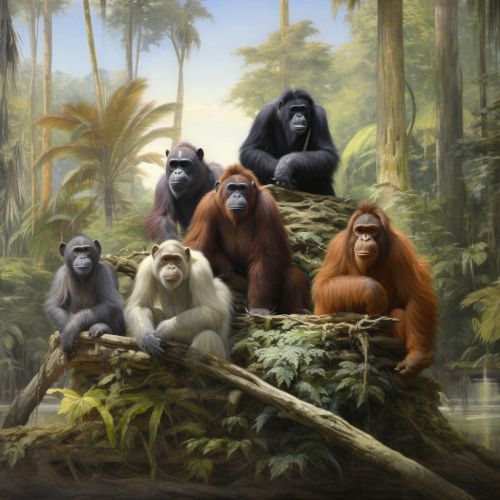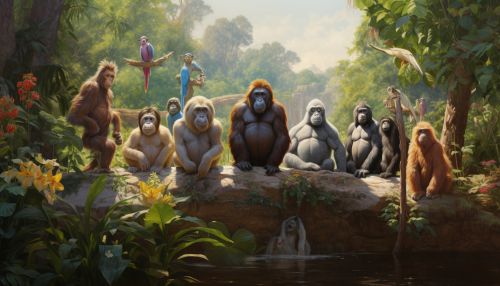Primates
Introduction
Primates are a group of mammals that includes humans, monkeys, apes, and prosimians such as lemurs and tarsiers. They are characterized by their highly flexible limb structure, forward-facing eyes, and a highly developed brain. Primates are found in various parts of the world, with the majority of species inhabiting tropical regions.


Evolution and Classification
Primates are believed to have evolved from small, insectivorous mammals approximately 60 million years ago during the Paleocene epoch. The earliest known primate-like mammal species, the Plesiadapiforms, had traits similar to those of both primates and other mammals. The exact relationship of these early species to modern primates is still a subject of debate among paleontologists.
Primates are classified into two main suborders: the Strepsirrhini, which includes lemurs and lorises, and the Haplorhini, which includes tarsiers, monkeys, and apes. The Haplorhini are further divided into two infraorders: the Simiiformes (monkeys and apes) and the Tarsiiformes (tarsiers).
Anatomy and Physiology
Primates exhibit a wide range of physical characteristics, but they all share certain anatomical features. For instance, primates typically have a shorter snout compared to other mammals, due to their reduced reliance on smell and increased reliance on vision. They also have a larger brain relative to body size, which is associated with higher cognitive abilities.
Primates have a highly flexible shoulder joint, which allows for a greater range of movement. This is particularly useful for species that spend a significant amount of time in trees (an arboreal lifestyle). Additionally, primates have opposable thumbs, allowing them to grasp and manipulate objects. This feature is most pronounced in the great apes and humans.
Behavior and Ecology
Primate behavior and ecology are incredibly diverse. Some species are solitary, while others live in complex social groups. Some are primarily arboreal, while others are terrestrial. The diet of primates ranges from purely herbivorous to omnivorous. Despite these differences, all primates exhibit some degree of social interaction and have some form of communication, whether it be vocal, visual, or tactile.
Primates play a vital role in their ecosystems. They are often key seed dispersers, helping to maintain biodiversity in tropical forests. Unfortunately, many primate species are threatened by habitat loss, hunting, and disease.
Conservation
Conservation of primates is a significant concern for wildlife conservationists. Many species are threatened or endangered due to habitat loss, hunting for bushmeat, and the illegal pet trade. Conservation efforts include habitat preservation, anti-poaching measures, and captive breeding programs. However, these efforts are often hampered by political instability, lack of funding, and conflicts with human interests.
